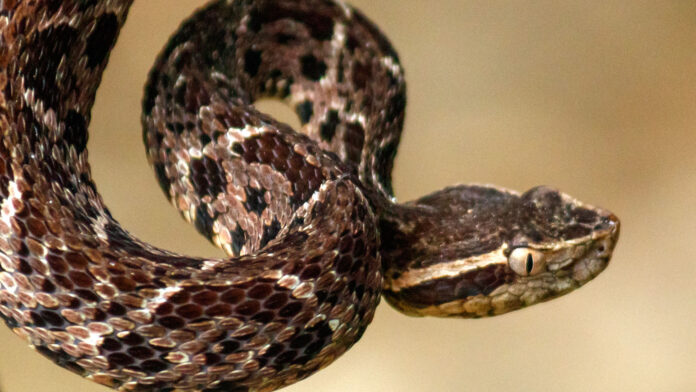Fer-de-lance means spearhead in French, and it is a pit viper with venom that is more fatal than any other snake. In fact, this pit viper is responsible for more human deaths than any American reptile in where they come from. When it comes to dangerous and venomous snakes, fer-de-lance always stays on the list. We are going to learn some more details about them today, so let’s take a look.
1Appearance
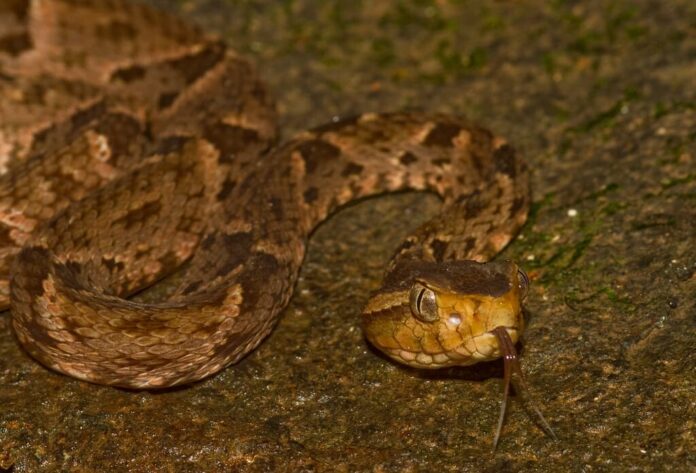
You can recognize a fer-de-lance by its broad and flattened head that is set apart from the rest of its body. Its two flickering eyelids are set on either side of the snout, and it has heat-sensing pit organs flare from the nose. Once a fer-de-lance opens its mouth, you will see its pointed fangs that can inject a great amount of venom. A fer-de-lance can grow up to 4 and 6 feet in length, and females are usually bigger and longer than males.
The males also have brightly colored scales on their tail tips that help them to lure in prey, while females don’t. The color of the head is usually dark brown or black in color while its underside is often pale yellow. Fer-de-lance species has different patterns and colors on its dorsal and ventral that you can notice. The dorsal side can be black, dark brown, light brown, gray, olive, or tan in color. As for their ventral side, it is usually cream, whitish-gray, or yellow with dark blotches.
2Behavior & Venom
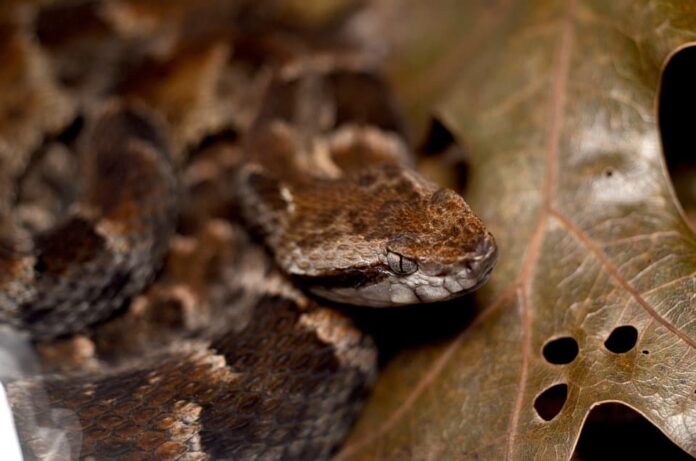
Fer-de-lances are solitary snakes, and they are less active in colder and drier periods. Despite their fatal venom, fer-de-lance usually avoids humans and flees if disturbed although they are very aggressive sometimes. On some other occasions, it would also defend itself vigorously by striking as soon as an enemy is within reach. Unpredictable temper and deadly venom is a very dangerous combination for a snake, and fer-de-lance has them all. Its defensive display is the exhibition of an S-shaped, showing it that it is ready to strike.
These snakes have long and sharp fangs that release a strong and fast-acting hemotoxic venom. On average, a fer-de-lance injects around 105mg of venom in one bite and a fatal dose for a human is 50mg. In some serious cases, these potent snakes can also inject up to 260mg of venom per bite which is very deadly. A single bite can kill at least 32 people, but the survival chances depend on where you are bitten.
On top of that, their venom also contains an anticoagulant that causes hemorrhaging and properties that cause the tissues to die. The results from their bites can be severe gangrene which can result in amputations if not death. Another thing to remember is that sometimes a fer-de-lance may change its mind after it fled. That means it would turn back and strike, or come back to strike some more when it left after it already bit you.
3Feeding & Habitat
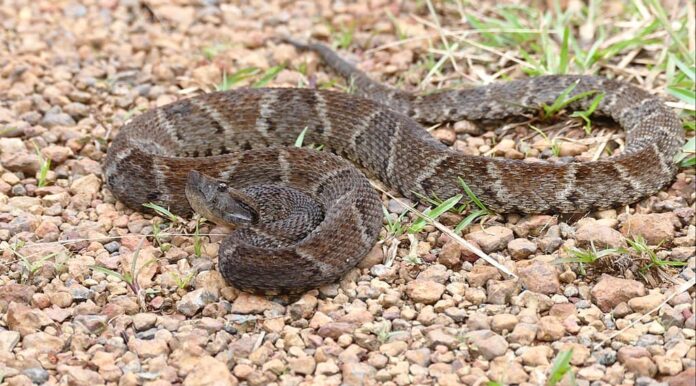
Fer-de-lance is nocturnal so it usually hunts at night, but it also looks for food during other times of the day. Their main food consists of amphibians, birds, large insects, reptiles, and small mammals, especially mice and rats. The hunting strategies of these snakes are quite different yet convenient for them. It strikes fast and then waits for the venom to work, it will follow the scent trail once the prey is dead. Easy and simple, and there is no need for them to chase the prey at all.
The population of fer-de-lance is widely distributed throughout Central and South America. These venomous snakes can climb trees and swim, and the range of their habitats is quite wide. Fer-de-lance lives in premontane forests, but you can also find them in evergreen forests, pine savannas, rainforests, or on plantations. They are also found in run-down houses where food such as mice and rats are adequate. This is also the reason why fer-de-lance often comes into contact with humans.
4Predators & Threats
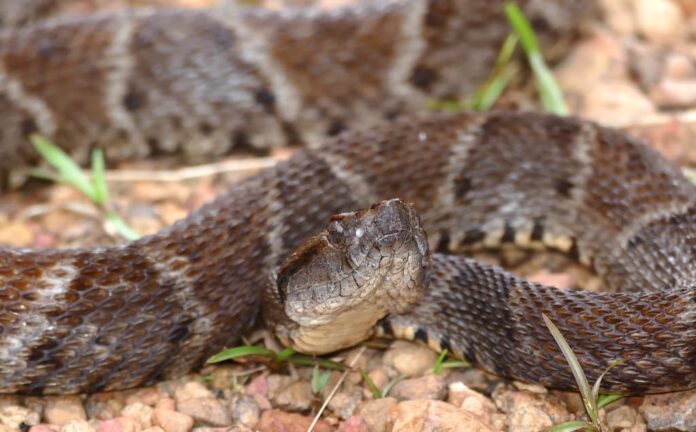
In spite of their aggressiveness and venom, fer-de-lances also have enemies and predators around them. There are a few snake species that prey on them such as blacktail indigos, coral snakes, and mussuranas. Apart from those, fer-de-lances are the favorite meals for ferocious birds of prey like eagles and laughing falcons. Both of these birds can incapacitate a snake in one dramatic swoop from above. Plus with the fact that they bite behind the head and cleanly tear it off, the deadly fer-de-lance won’t stand a chance.
The good thing about their number is that it is not endangered because people don’t really hunt them. At the same time, the population of these snakes is diverse and wide so there is nothing to worry about them. However, the main threat to these venomous snakes is habitat loss due to agriculture, deforestation, and urbanization. At the same time, fer-de-lances also suffer from the decline of prey and environmental changes in their local habitats.
Related Post: Most Dangerous Snakes In Asia

